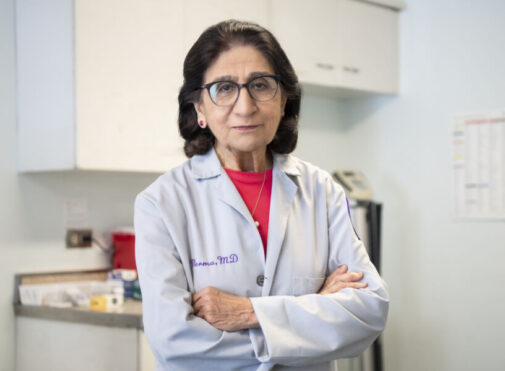Could this procedure replace open heart surgery?

For decades, open heart surgery served as the only way to address a wide range of cardiac issues.
But the U.S. Food and Drug Administration recently expanded access to transcatheter aortic valve replacement (TAVR) to patients who are at a low risk of complications for open heart surgery. The procedure allows specialists to replace a narrowed aortic valve by inserting specialized catheters to implant a new valve. The minimally invasive approach can result in shorter hospital stays, reduced risk of complications and less pain without compromising on quality.
In the past, TAVR was reserved for patients at intermediate to high risk for traditional surgical valve replacement through open heart surgery, such as Barrington resident Paul Loeber.
Loeber started to noted a shortness of breath and difficulty climbing steps in December of 2018.
“I was used to climbing two steps at a time,” he says. “But it got to where I couldn’t do it and had to stop at the landing to catch my breath.”
His condition deteriorated into the new year, limiting his movement and energy levels.
Eventually, through a consultation with Dr. Neal Sawlani, Director of Structural Heart Cardiology at Advocate Lutheran General Hospital in Park Ridge, Ill., Loeber was approved for a TAVR procedure in February.
He was out of the hospital the following day.
Loeber called the procedure “life-saving and life-changing” and would recommend it to anyone whose physician approves.
“I noticed immediate improvement in my ability to walk greater distances without feeling winded,” Paul says. “If I knew how quick the procedure and recovery was, I would’ve done it sooner.”
Dr. Sawlani says the FDA’s new ruling is an exciting change, as it provides access to the largest group of patients who previously could not partake in TAVR.
That’s not to say that open heart surgery will be a total thing of the past as TAVR access expands — patients in their 60s still benefit from surgery because it would allow them to get a mechanical aortic valve, which is not available through TAVR.
“There’s still a role for surgery,” Dr. Sawlani says. “Each patient we see has an individual case. Everyone is unique, requires a different size valve and has medical conditions that need to be evaluated. But it’s certainly appealing to patients – it’s an exciting time for cardiology.”
Want to learn more about your risk for heart disease? Take a free, quick online risk assessment to learn more by clicking here.
Before the announcement, Advocate Aurora Health greatly expanded its TAVR program, going from three to seven sites – including six in the Chicagoland area – that are able to perform the procedure. In Wisconsin, TAVR is available at Aurora St. Luke’s Medical Center, where our multidisciplinary team of experts were not only the first to perform TAVR in Wisconsin, but they were part of the recent low-risk TAVR trial that led to FDA approval. To learn more, click here if you live in Illinois. Click here if you live in Wisconsin.
Related Posts
Comments
About the Author
Nathan Lurz, health enews contributor, is a public affairs coordinator at Advocate Good Samaritan Hospital. He has nearly a decade of professional news experience as a reporter and editor, and a lifetime of experience as an enthusiastic learner. On the side, he enjoys writing even more, tabletop games, reading, running and explaining that his dog is actually the cutest dog, not yours, sorry.

















